Thanks for the information Ramone  Norman Tattersall rings a bell
Norman Tattersall rings a bell  :-
:-
From the Friday,16th November,1956 edition of THE COMMERCIAL MOTOR:-
NORMAN TATTERSALL will become chief engineer of the engine division when his present contract
with the Ministry of Supply Tank factory expires. The engineering organization of Leyland Motors,
Ltd., has been reconstituted into three divisions– vehicle, engine, and industrial and railcar.
Best Ergomatic Cabbed-Lorry Model? PART 21.Page 32.TRUCKNETUK.
Have a Happy WHITSUNTIDE

Bank Holiday 
In reply to Saviem:-References for my No.19 Post,page 28,in this thread on the AEC,Albion,Leyland
GKN Sankey Ergomatic Cab:-
Leyland Society Journal No.13.
Leyland Society Journal No.14.
Reference for the Leyland 700-Series and 500-Series Fixedhead Headless Wonder Diesel Engines in
my No.20 Post,page 30,in this thread:-
Leyland Society Journal No.3.
LEYLAND 700-SERIES AND 500-SERIES FIXED CYLINDER HEAD HEADLESS WONDER DIESEL ENGINES.
The article in No.3,is a dissappointment.It’s title includes this statement:“The development of
the 500 engine…”
Although the author worked as an engineer on the chassis side of Leyland’s Truck and Bus
Division,the title is a misnomer since,A,he was not part of the engine development
team,B,although he does provide some details on the engines (QV my No.20 Post),he does not
provide full details on the history of the development of the 700-Series and 500-Series engines
and,C,he does reveal whose idea it was for a fixed cylinder head engine in the first place! 

Anyway,during my research for the marque last say feature in this post,I did come across an
article by a former Leyland engineer,who had also worked as an engineer for other companies in
the motor industry,M.R.Dunn  - his name will also be mentioned in my reply to [ZB] Anorak.
- his name will also be mentioned in my reply to [ZB] Anorak.
According to him,the 500-Series engine was designed by a senior engineer who was apparrently on
the verge of retirement and regarded his last design,i.e,the 700-Series-500-Series as something
of a swansong.An unusual feature of the 500-series is that it was a bi-rotational engine:The
flywheel could be fitted at either end of the crankshaft,and the auxiliaries could be fitted on
both sides of the engine.
He also mentions that the 500-Series had resonant engine bending - this was also mentioned in the
500-Series article,but it was a different form of engine bending,as far as I know,becuse
resonance wasn’t involved.
VALKYRIE wrote:-
VALKYRIE replies:Multi-marque companies have far bigger market shares and profits than single
marque companies.This objective fact was proved by the Leyland Motor Corporation in
the 1950s,1960s and 1970s,and other motor corporations have also proved it,and are still proving
it! 

[ZB] Anorak wrote:-
“Regarding multiple-marque conglomerates, I tend to agree with Cargo on this. Successful firms of
this type use common main components- the different products are created by detail
styling/marketing. The Leyland group had a massive plethora of different components,so
rationalisation was essential.”
VALKYRIE replies:-
MULTI-MARQUE COMPANIES HAVE THE BIGGEST MARKET SHARES AND PROFITS.
We have covered this subject before,as have several other enthusiasts and the story of the
Leyland Motor Corportion-British Leyland Motor Corporation is essentially tragi-comic 
The chief of Leyland,Sir Henry Spurrier III,rightly said that Leyland’s chief objective should
always be “at the top of the tree”  Thus,they went empire building and took over some very
Thus,they went empire building and took over some very
successful companies,such as Albion,Scammell,AEC,Rover,Self Changing Gears,and so on,and the
group flourished and did very well in the 1950s and 1960s  ,in fact Leyland was the largest
,in fact Leyland was the largest
commercial vehicle group in the world! 
 It was one of the flagship British companies!
It was one of the flagship British companies!  And it dominated the British commercial vehicle market and certain export markets!
And it dominated the British commercial vehicle market and certain export markets! 

And all was well with the world  :-
:-
LEYLAND was moving fast in a fast-moving world  -
-
LEYLAND MOTOR CORPORATION ADVERTISEMENT -MULTI-MARQUE LMC WERE MOVING FAST-IN A FAST MOVING WORLD DURING THE HALCYON 1960s.Note the AEC Mk V lorry in the background:D :-
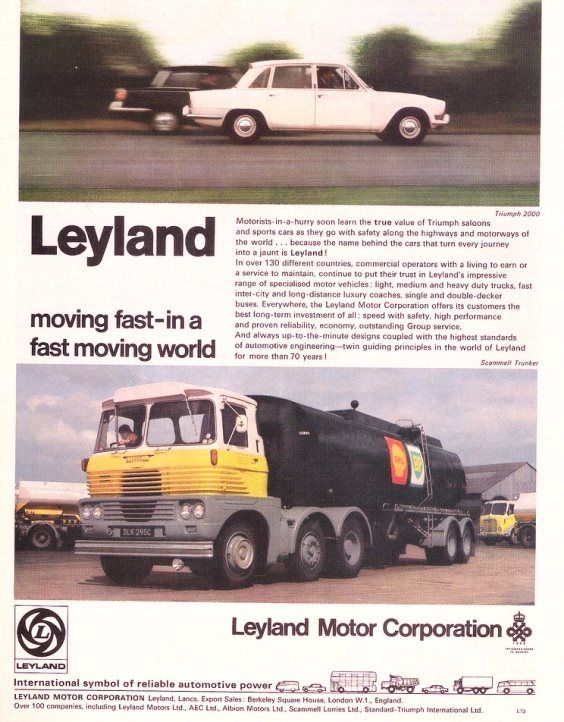
LEYLAND.SIR HENRY SPURRIER III,chief of Leyland,his objective for the company was,in his own words" Leyland should always be at the top of the tree"  :-
:-

As a believer in the Afterlife,I’m sure that both Sir Henry Spurrier and Lord William Black of
Barrow In Furness (Spurrier’s successor) had some very harsh words to say to Harold Wilson,Sir
George Harriman,Ron Ellis,Lord Donald Stokes (Henry’s No.1 boy),etc, for leading the Leyland
Group in to bankruptacy,ruin and death! 






THE SURREAL LEYLAND WORLD.
But there is another way at looking at the above Leyland story,a story that became true and is
worthy of those delightfully surreal Salvador Dali paintings,the most famous of which is this one  :-
:-
Surrealist,Salvador Dali,painted “The Persistence of Memory” in 1931,complete with floppy clocks! 
 :-
:-
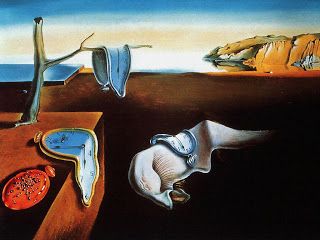
Surreal Leyland,though,is anything but delightful! 

Leyland Surreal is a nightmare! 

 Thus:the successful Leyland Motors bought successful companies and closed them down,and in doing so Leyland alienated customers,became a failure and vanished!
Thus:the successful Leyland Motors bought successful companies and closed them down,and in doing so Leyland alienated customers,became a failure and vanished! 

 - What a stark contrast to the Leyland moving fast in a fast-moving world image!!!
- What a stark contrast to the Leyland moving fast in a fast-moving world image!!! 





It’s tragi-comic and surreal! 

 - and anti-commercial!
- and anti-commercial! 


LEYLAND POSITIVE RATIONALSATION = COMMERCIAL SUCCESS.
But to return to those halcyon days of the 1950s and 1960s,when the Leyland group was king! 

Leyland engines were fitted in Leyland’s,Albion’s and Scammell’s,the group hub reduction axle
was fitted to Leyland and Albion models (Scammell and Guy models as well?  ).
).
AEC-Thornycroft gearboxes were fitted to certain Scammell models,and AEC engines were fitted in
certain Guy,Scammell and Albion vehicles.And there were other component sharing exercises as
well.All the marques went from success  to success
to success  …and all was well with the world
…and all was well with the world 
LEYLAND NEGATIVE RATIONALSATION = COMMERCIAL SUICIDE.
I’m all for rationalsation to a certain extent in the above positive way.BUT Leyland committed
obscene NEGATIVE RATIONALSATION in the 1970s and beyond,with its wholesale mass D E S T R U C T I O N of the most successful and major part of the British Commercial Vehicle Industry!!! 








And if anybody agrees with this EVIL policy he or she is objectively totally WRONG!!! 








IT WAS ABSOLUTELY FUTILE, COUNTER-PRODUCTIVE AND L U D I C R O U S !!! 







AND THE SCANIAS,MERCEDES-BENZS,VOLVOS,DAFS,FODENS,ET AL,ALL DANCED ON LEYLAND’S GRAVE!!! 








In other words,the market shares of AEC,Guy,Scammell,Albion,Bristol,Daimler,Leyland,et al,
were taken over by Volvo,Scania,MAN,Hino,Foden,etc - all these manufactures must have
laughed all the way to the bank because of increased market shares! They must have thought that
all their Christmases had all come at once!!! 








I’m sure that,although there is component sharing in today’s multi-marque companies,some of the
motor manufacturers within these groups still design and build their own engines,transmissions
and other components 
Astute and wise people also state the objective facts too,such as Leyland and Alvis engineer,
M.R.Dunn  :-
:-
QUOTE:-"Decisions had been taken to rationalise the various AEC,Albion,BMC Bathgate,
Guy and Leyland lorries by offering only Leylands.The result was that when their favourite
marque was no longer available many previously loyal lorry operators decided to
change to Volvo,Scania or Mercedes-Benz,instead of to the Leyland model that they felt had
upsurped their previous choice.Competitors sensed the demise of Leyland and were on the look out
for opportunities  ."UN-QUOTE.
."UN-QUOTE.
And I myself knew in 1976 that this would happen to Leyland! 
 - I have proof
- I have proof 
LORD DONALD GRESHAM STOKES OF LEYLAND.Had a very severe telling off from Henry Spurrier III and
William Black for helping to destroy the Leyland Group.He is now learning the errors of his ways
 - and all of the Leyland mis-management will sooner or later:-
- and all of the Leyland mis-management will sooner or later:-

Two more photographs that capture the negative,surreal and twilight world of Leyland’s tragi-comic Götterdämmerung 
 :-
:-
SALVADOR DALI.Alfred Hitchcock’s SPELLBOUND - part of the delightfully surreal Wishful Dreaming sequence.The mysterious faceless murderer 
 :-
:-
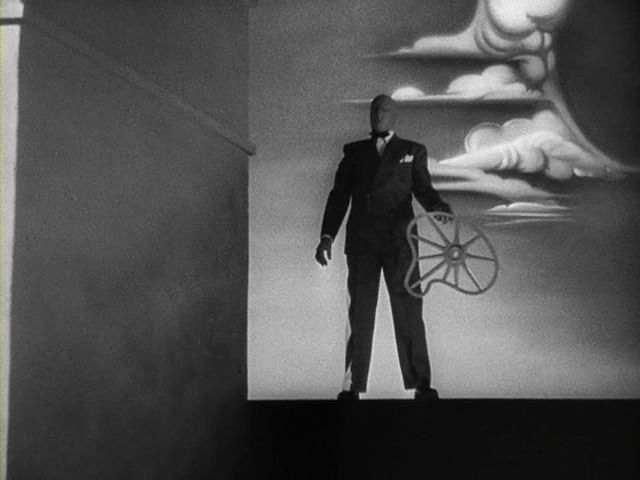
Salvador Dali.Alfred Hitchcock’s SPELLBOUND - another photo of part of the delightfully surreal
dream sequence by Salvador Dali  .This symbolicaly depicted a murder mystery in psychoanalytic
.This symbolicaly depicted a murder mystery in psychoanalytic
dream interpretation  - This is also symbollic of Leyland’s fratricides,prolicide and suicide
- This is also symbollic of Leyland’s fratricides,prolicide and suicide
in the business and commercial sense of these terms.The faceless man next to the chimney is the
mysterious murderer- in this case it’s the iniquitous Leyland mis-management! 

 :-
:-
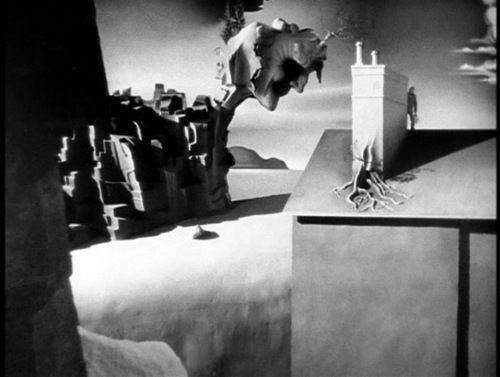
And here is a list and explanations of the amazing number of 'cides!  :-
:-
phrontistery.info/kill.html
I love surrealism  :-
:-
sgillamhumanities.blogspot.co.uk … ntury.html
The mention of Alvis above is very appropriate:ALVIS is the marque to have the last say in this Post No.21:- 






Alvis,like Albion,is another rare survivor of the British Leyland tragi-comedy and debacle 
Well,at least it was until 2004 when it became part of British Aerospace Land Systems,ALVIS,The
Red Triangle,very sadly lost it’s identity  - trust top management to make ludicrous mistakes!
- trust top management to make ludicrous mistakes! 


However,Alvis was mainly known for it’s high quality motorcars,sports cars,grand tourers,etc,but
Alvis stopped making their motorcars in 1967,under Leyland policy - trust top management to make
ludicrous mistakes! 

 ,but Alvis continued to make military vehicles,etc
,but Alvis continued to make military vehicles,etc 
ALVIS marque The Red Triangle badge:-

ALVIS FWD TYPE FA ULSTER OPEN SPORTS CAR,1928.Has front wheel drive,which was quite unusual in 1928:-
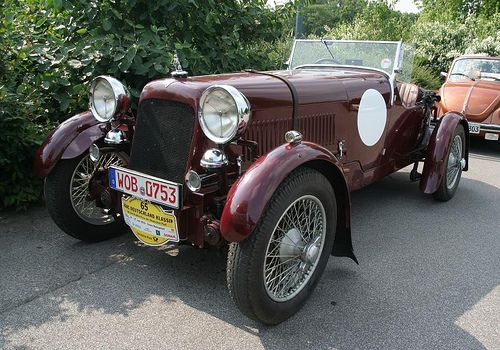
ALVIS also built large motorcars and limousines for the Top Hatted Brigade -Alvis Crested Eagle T-Series Limousine.1937:-
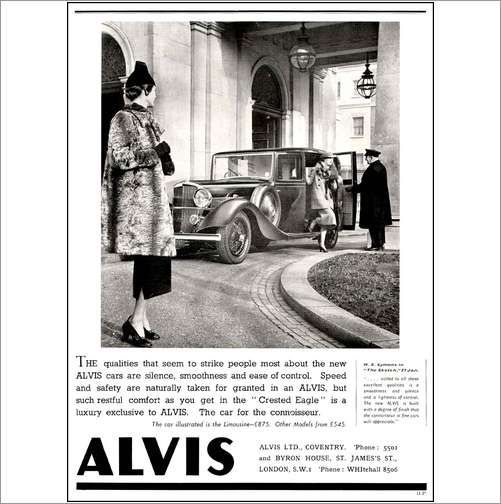
ALVIS-STRAUSSLER IIID ALL-WHEEL STEER 4x4 ARMOURED CAR,World War Two:-

In the Post War years Alvis produced a range of six wheel drive military and civilian motor vehicles,all of which were based on the same 6x6 twin steer chassis design that featured Rolls-Royce B-Series in-line 8-cylinder petrol engines,which had a range of different gearboxes,all of which drove through propeller shafts,drive shafts,six bevel gear units each of which had a drive shaft that drove one wheel each.The reason for this unusual transmission system was to have
improved ground clearance and cross-country performance,compared to vehicles that had conventional drive axles:-
The Saladin Armoured Car,Saracen Armoured Personnel Carrier,Salamander Airfield Fire Crash Tender
Fire Engine and the Stalwart Amphibious High Mobility Freight Carrier Lorry 
ALVIS SARACEN FV603 6x6 ARMOURED PERSONNEL CARRIER,31 3A 16,CAEN,ex-British Army:-
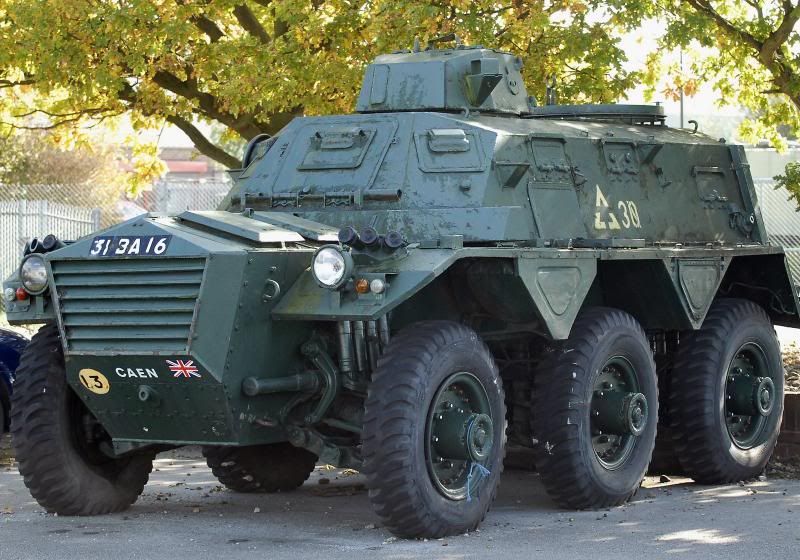
ALVIS Stalwart Mk1,Mk2 FV620,FV622,FV623,FV624 Amphibious High Mobility Freight Carrier Lorry.Cross sectional illustration:-

ALVIS Stalwart Mk1,Mk2 FV620,FV622,FV623,FV624 Amphibious High Mobility Freight Carrier Lorry:-
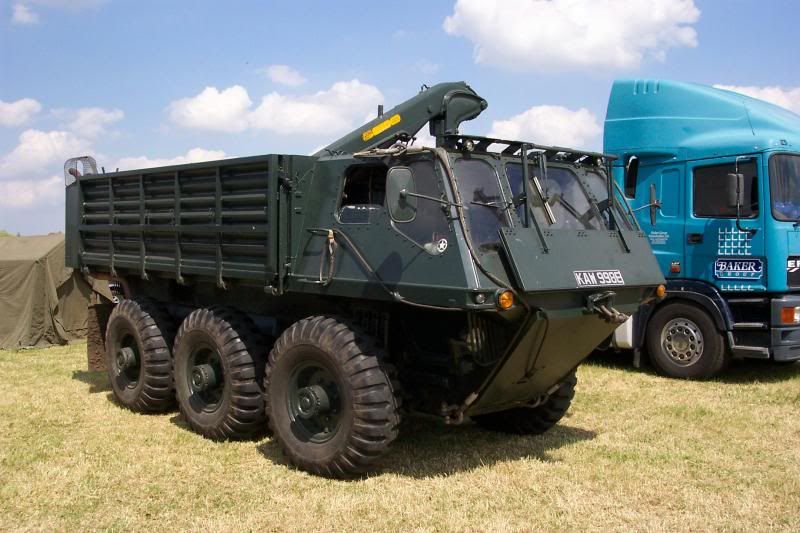
ALVIS SALAMANDER FV651A Mk 6 OR FV652A Mk 6A,PYRENE 6x6 AIRFIELD FIRE CRASH TENDER FIRE ENGINE.Coloured painting of cross-sectional view of this Alvis:-

ALVIS SALAMANDER FV651A Mk 6 OR FV652A Mk 6A,PYRENE 6x6 AIRFIELD FIRE CRASH TENDER FIRE ENGINE,73 AG 90.ROYAL AIR FORCE:-

British Leyland,instead of closing down Alvis,like they iniquitously did with almost everything else! 
 ,actually sold Alvis to United Scientific Holdings in late July 1981
,actually sold Alvis to United Scientific Holdings in late July 1981 
Alvis also built aeroplane engines,such as the Leonides radial nine-cylinder 450-650 BHP engine:-
Alvis Leonides Radial Nine-Cylinder 450-650 BHP Aeroplane Engine:-

Alvis took over Unipower in 1994,which made timber-logging road locomotives,and later made
airfield fire crash tender fire engines,military vehicles,heavy haulage ballast road locomotives,
etc,at least - from 1988 - some of which were based on Scammell designs…Scammell being
another tragic victim of the Leyland disaster - trust top management to make ludicrous mistakes! 

UNIPOWER FORESTER 4x4 TIMBER LOGGING ROAD LOCOMOTIVE,JAE 412,1945:-

UNIPOWER RE6D/CARMICHAEL 6x6 AIRFIELD FIRE CRASH TENDER FIRE ENGINE,G664 BPJ,1990.DUNSFOLD AERODROME:-
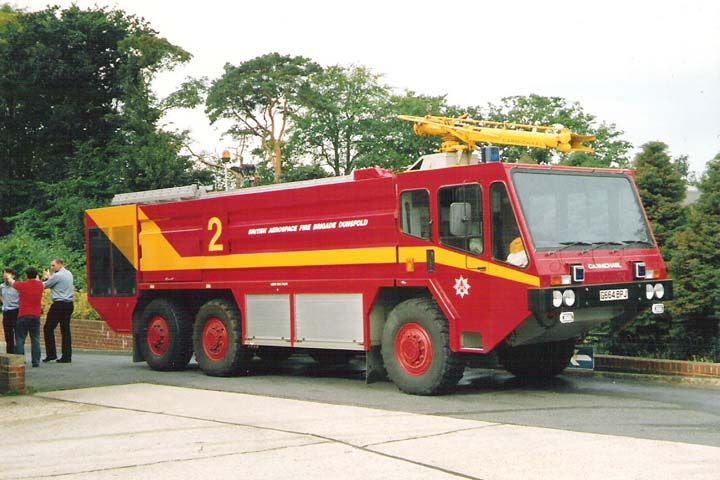
UNIPOWER,ALVIS-UNIPOWER,M-SERIES MH8875 8x8 HEAVY HAULAGE BALLAST ROAD LOCOMOTIVE,P547 HNT,1998.ALE=Abnormal Load Engineering:-
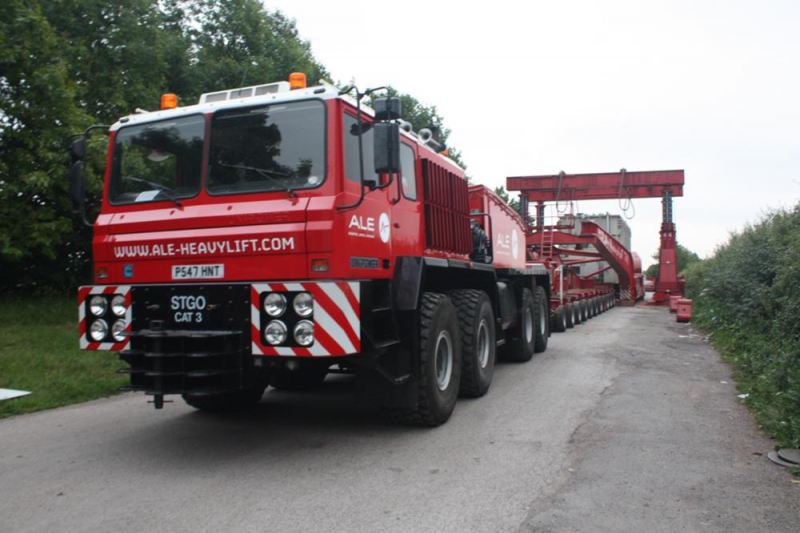
Just out of interest,I’ve finally put up an avatar for my TRUCKNETUK Posts  :-
:-
Pierce Arrow Silver Arrow V12 4-Door 6-Light Aerodynamic Streamlined Sedan Motorcar,of 1933 
Only five were made,the sale price was $10000 each - very expensive in those days - and in
the words of the late great Automotive Historian,Michael Sedgwick,this magnificent motorcar
was a “Dream Car,an aerodynamic monster in the grand manner”  :-
:-
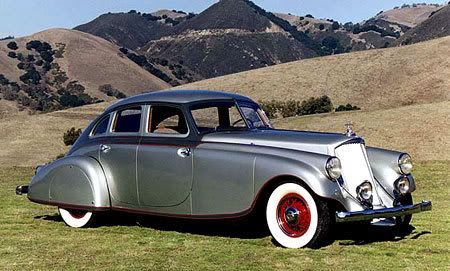

VALKYRIE
![]()
![]()
![]()




















